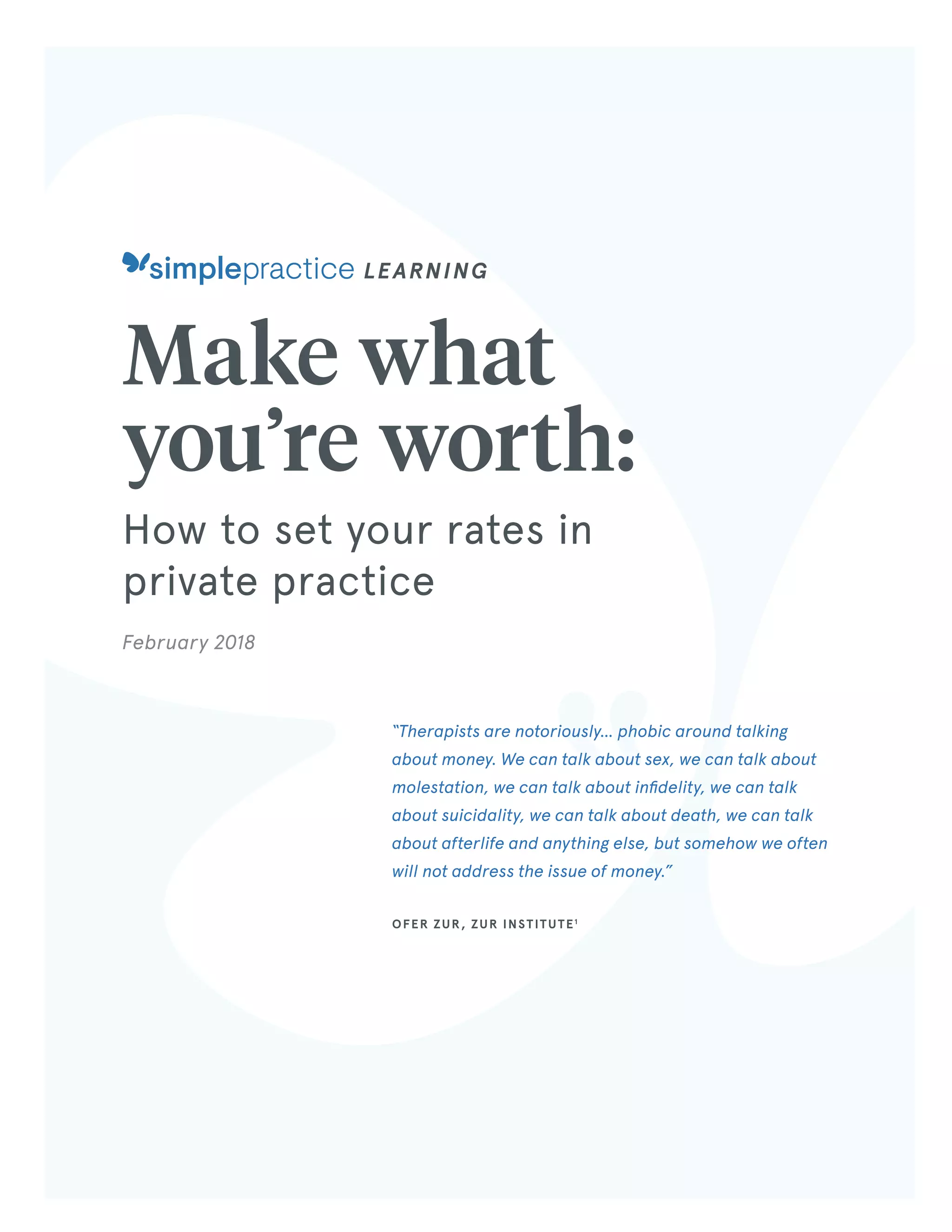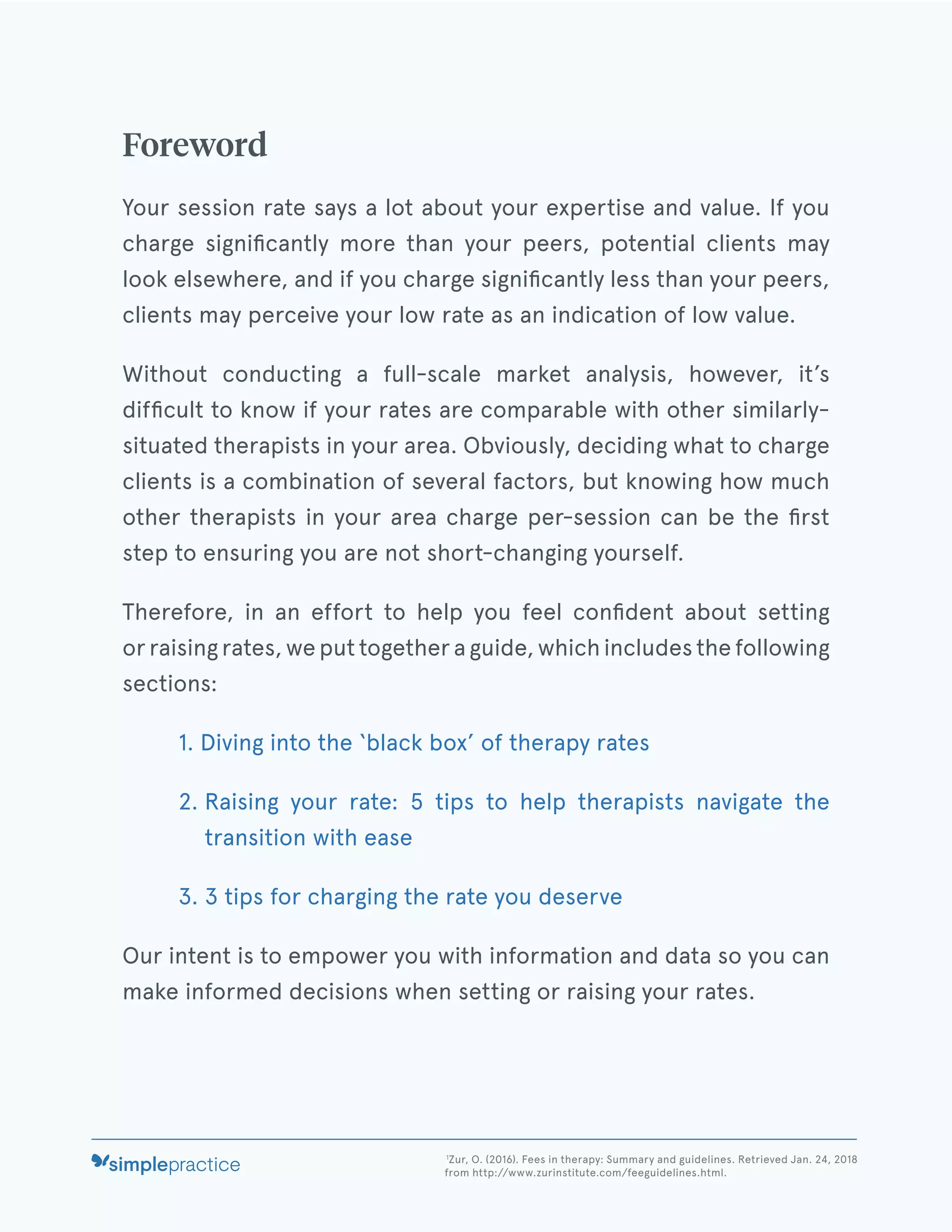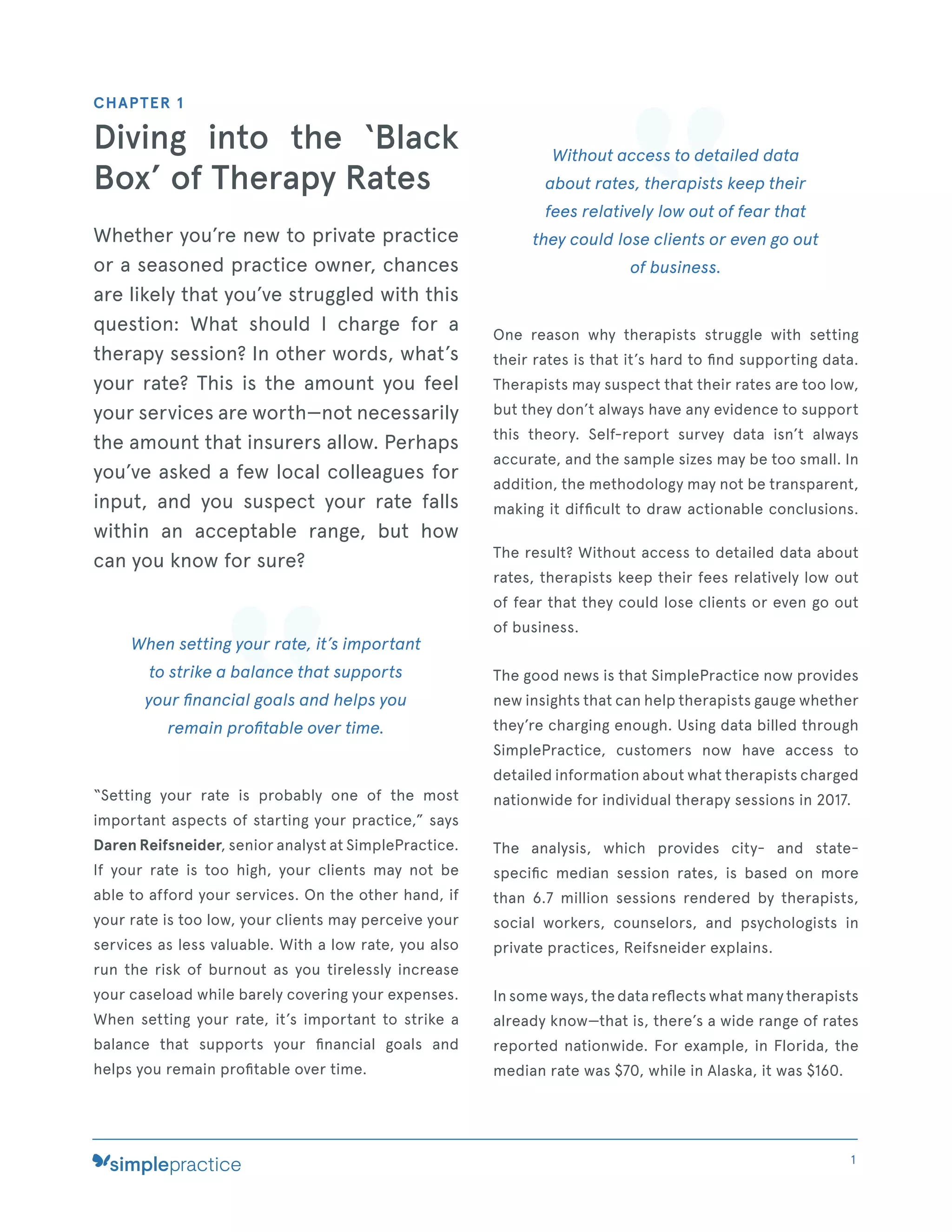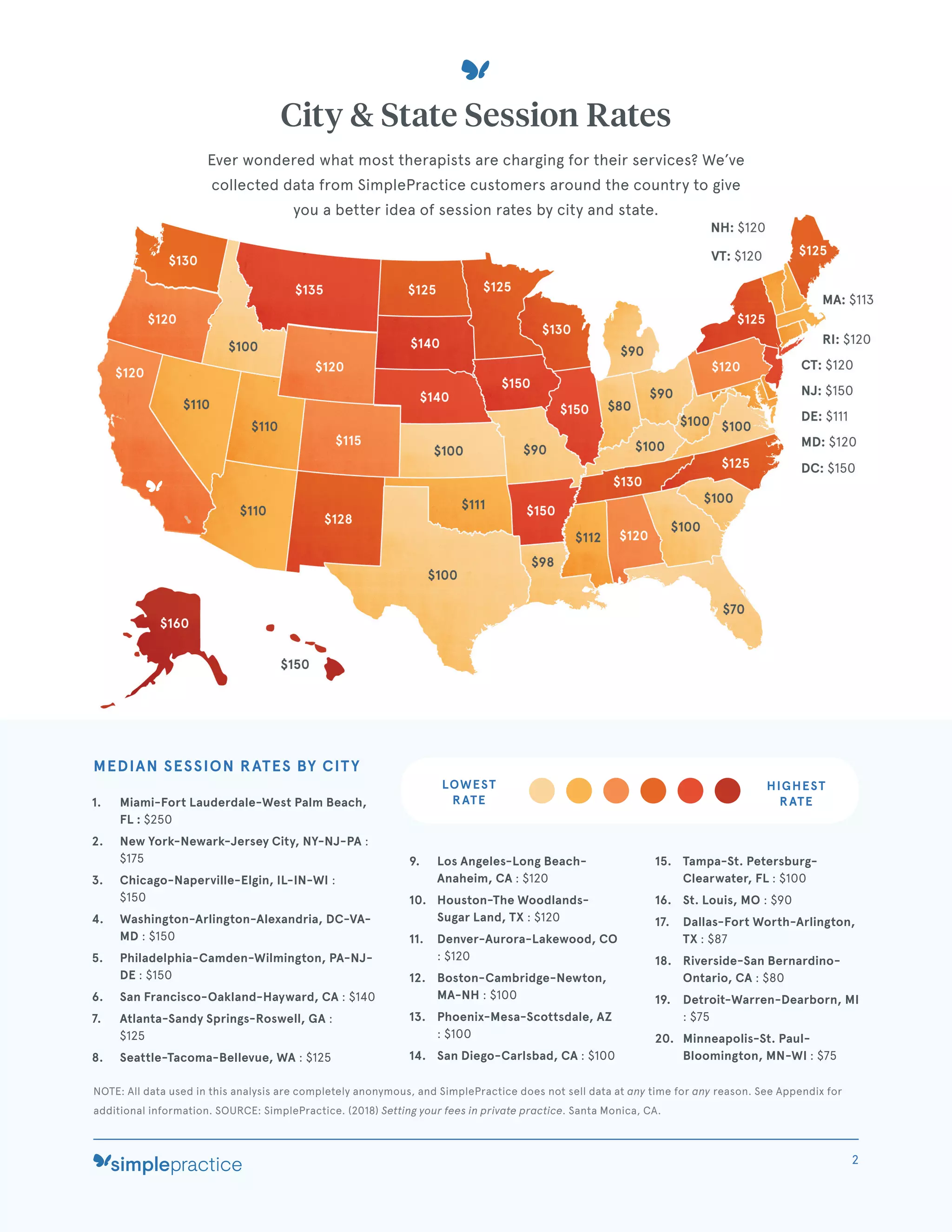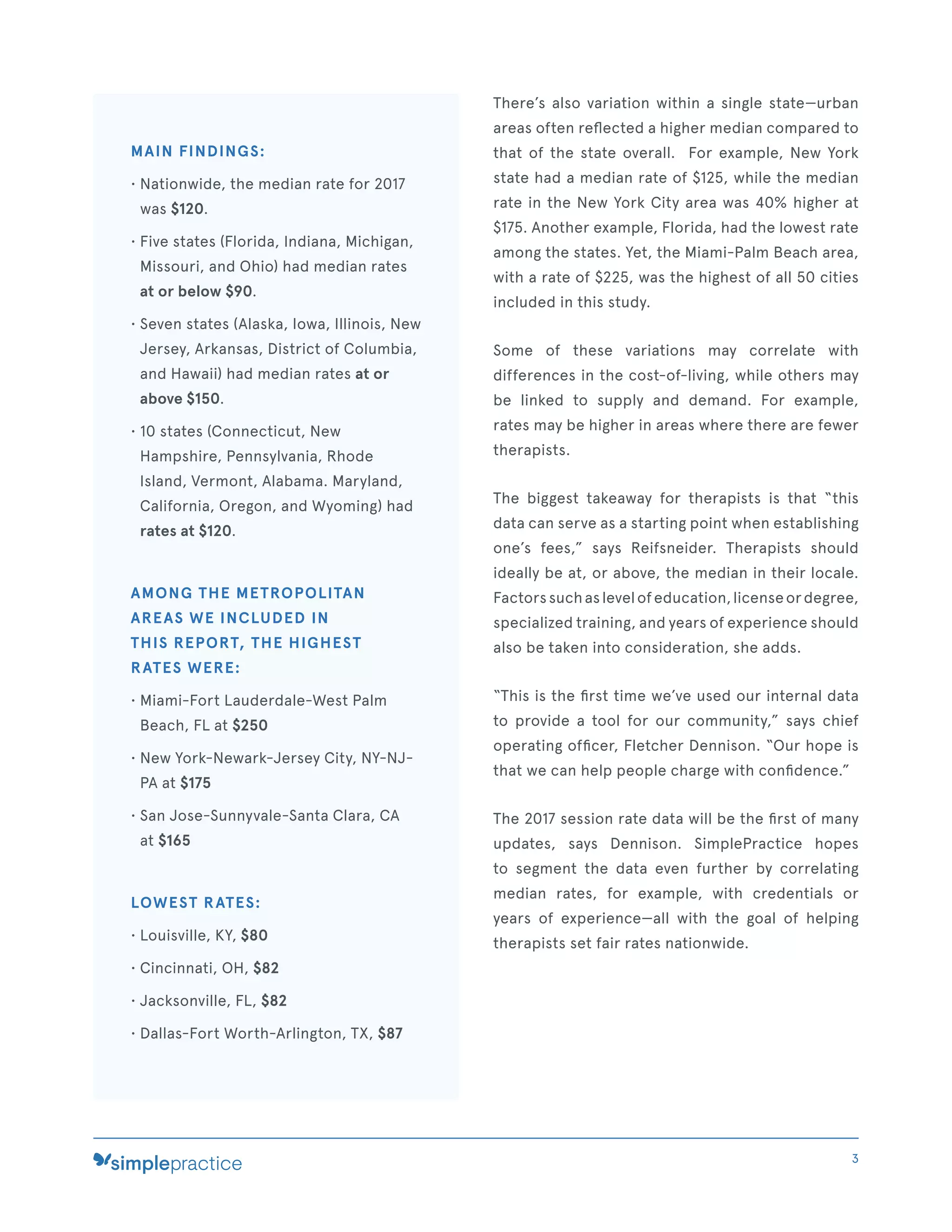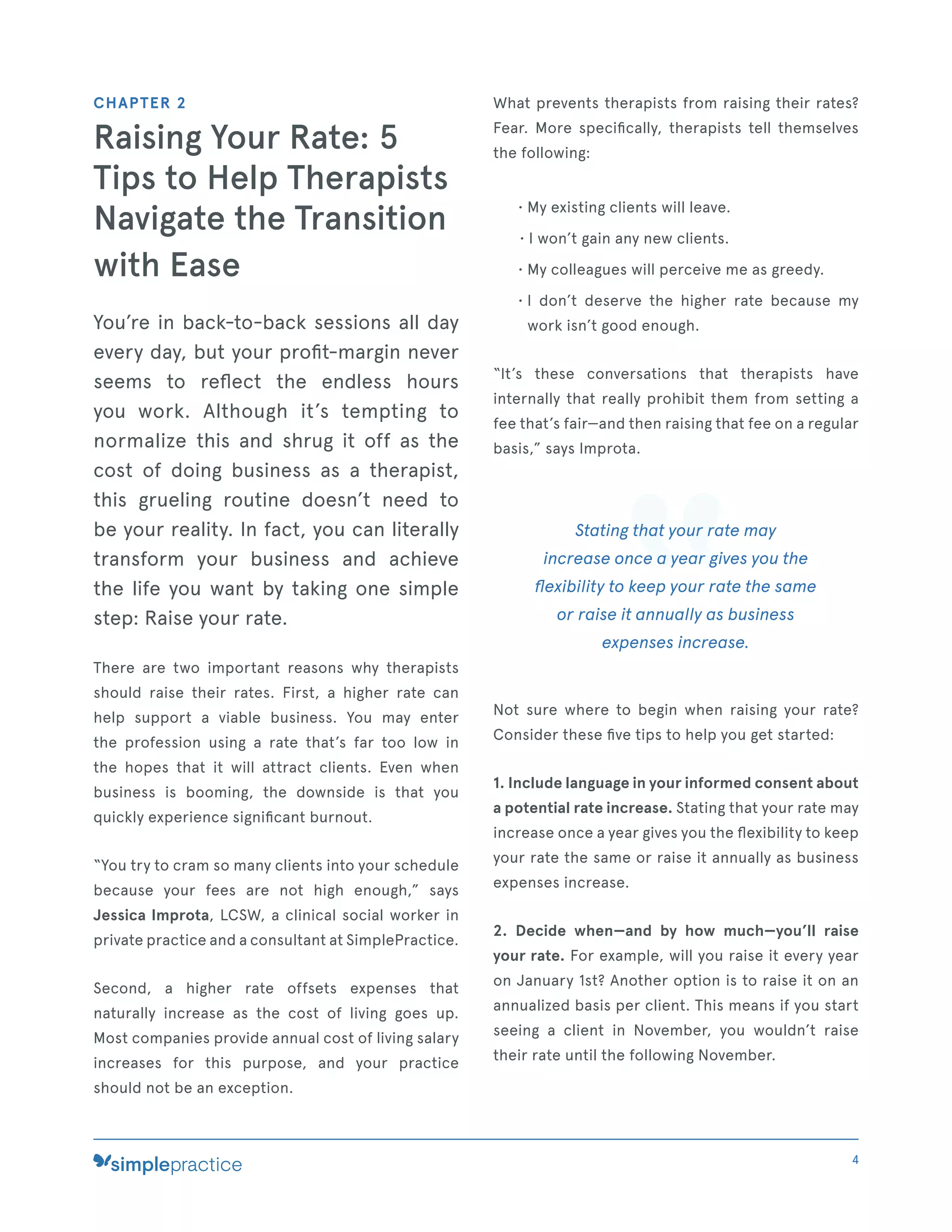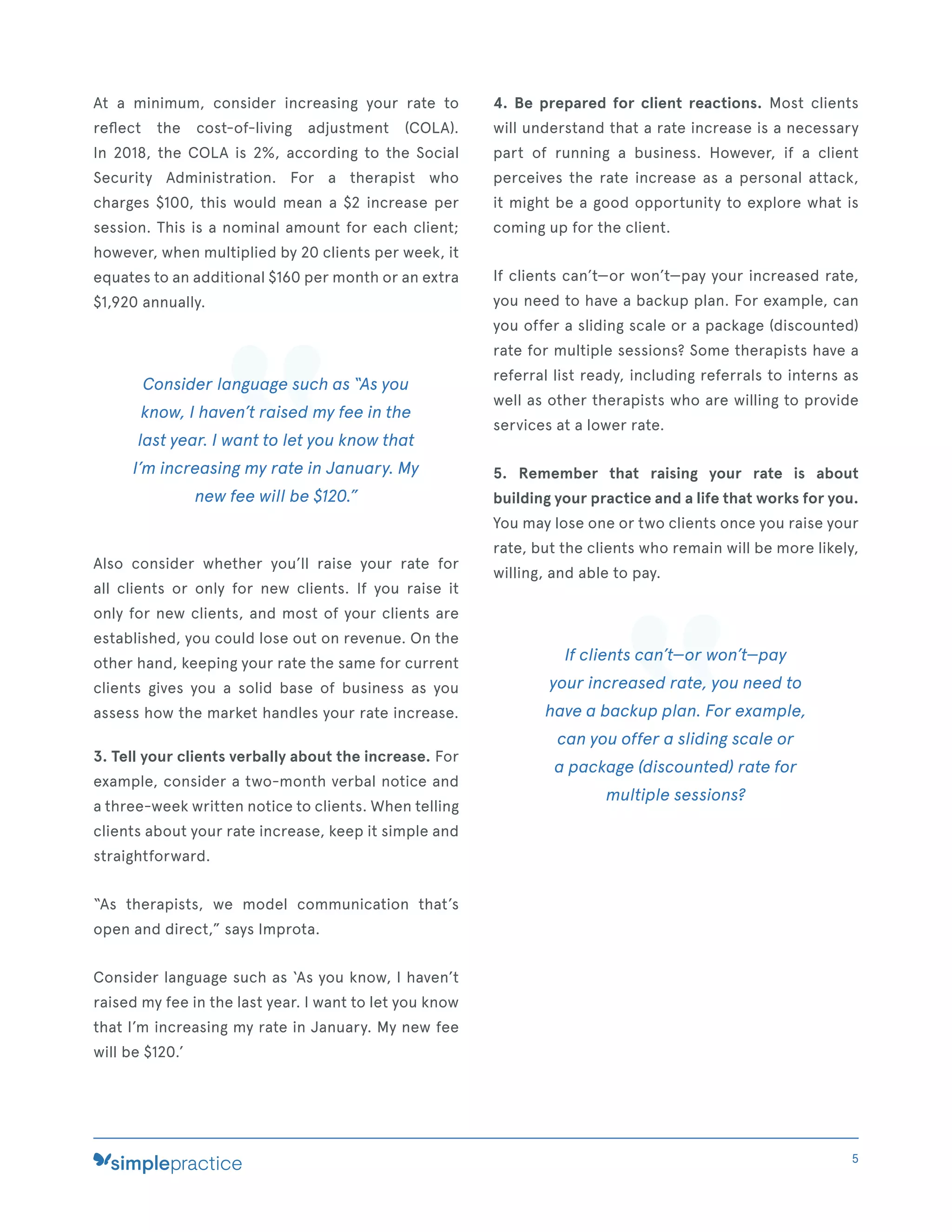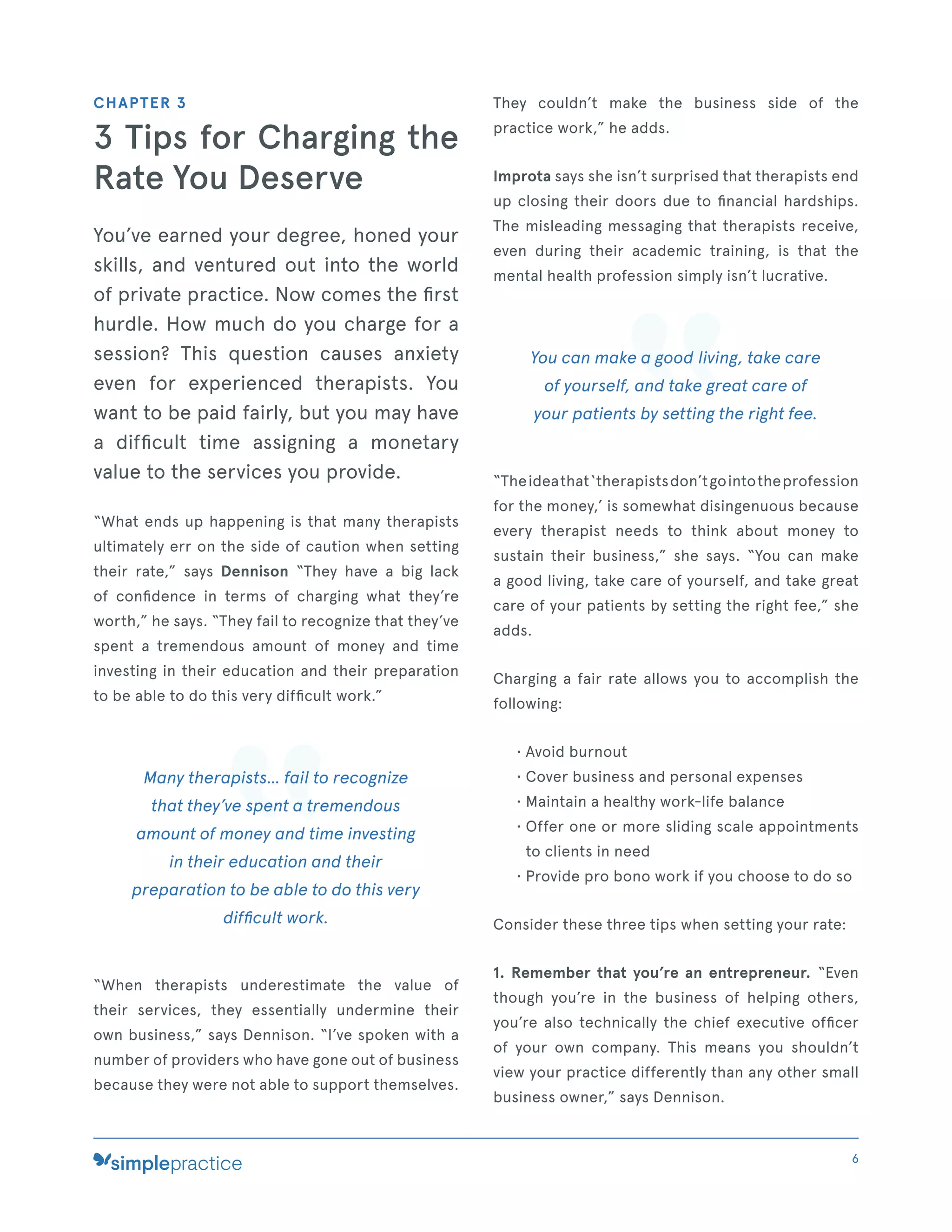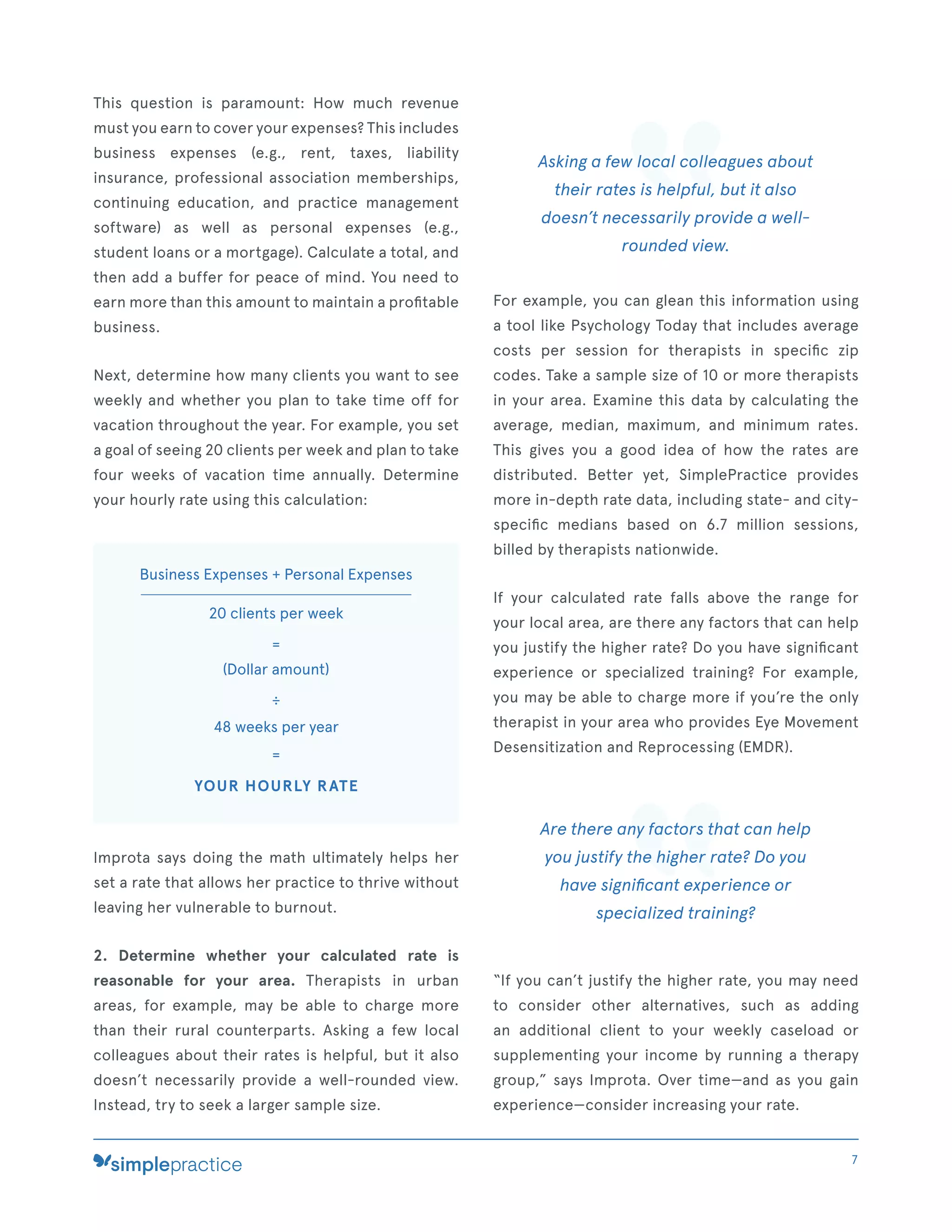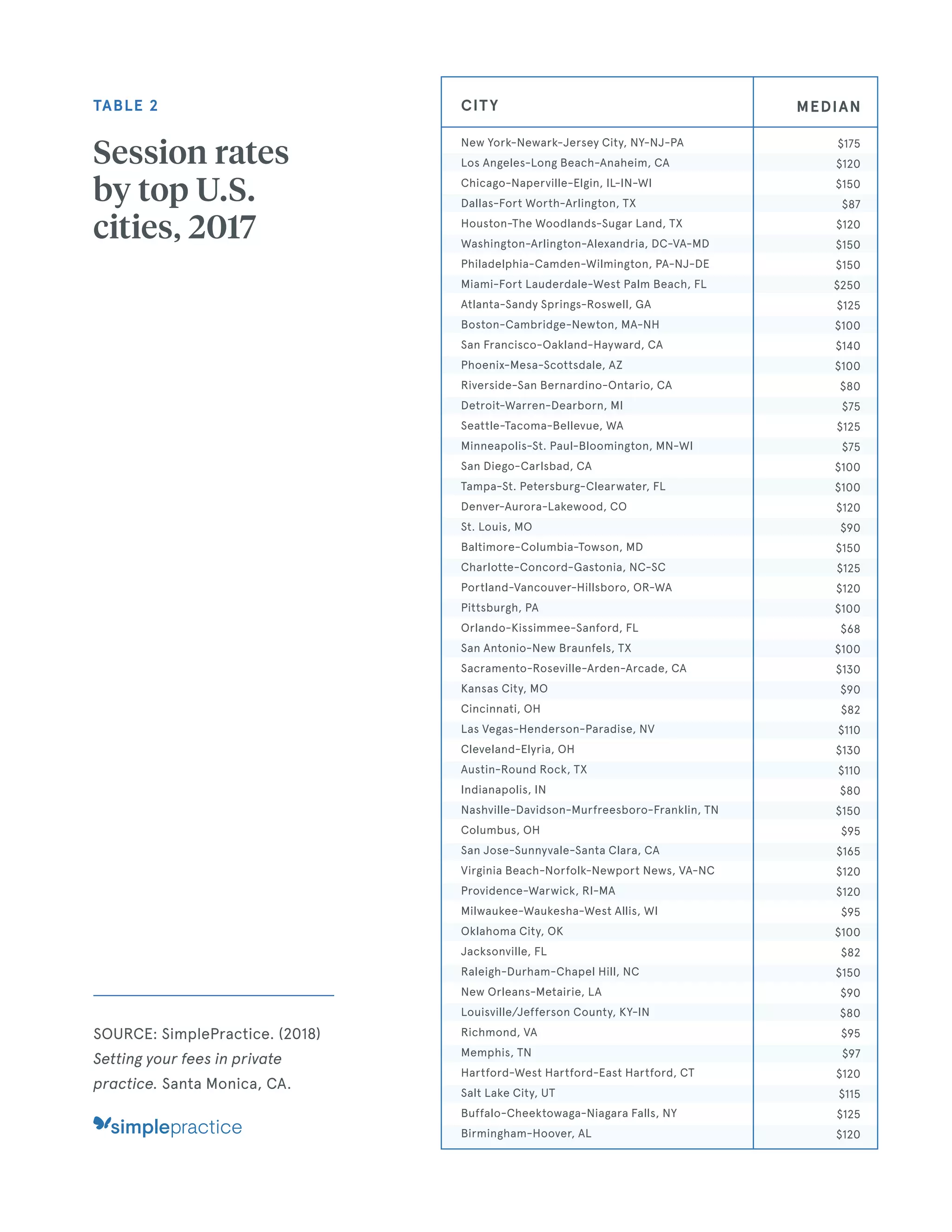The document discusses how therapists often struggle with setting their session rates due to fears and lack of data. It highlights the importance of balancing financial goals with perceived value and provides insights from SimplePractice on nationwide therapy rates. Tips for raising rates and charging fairly are provided to empower therapists in establishing their fees confidently.
